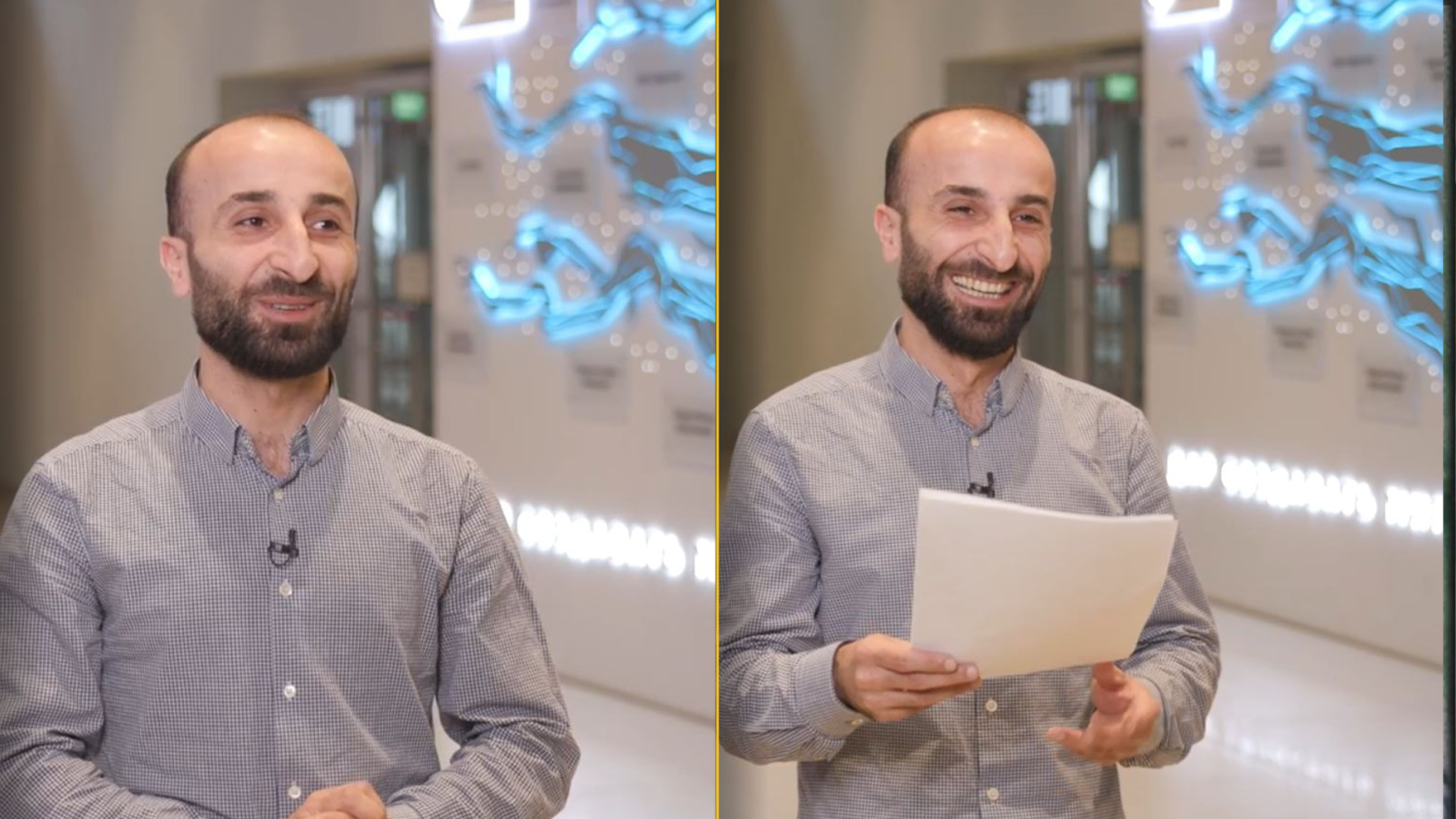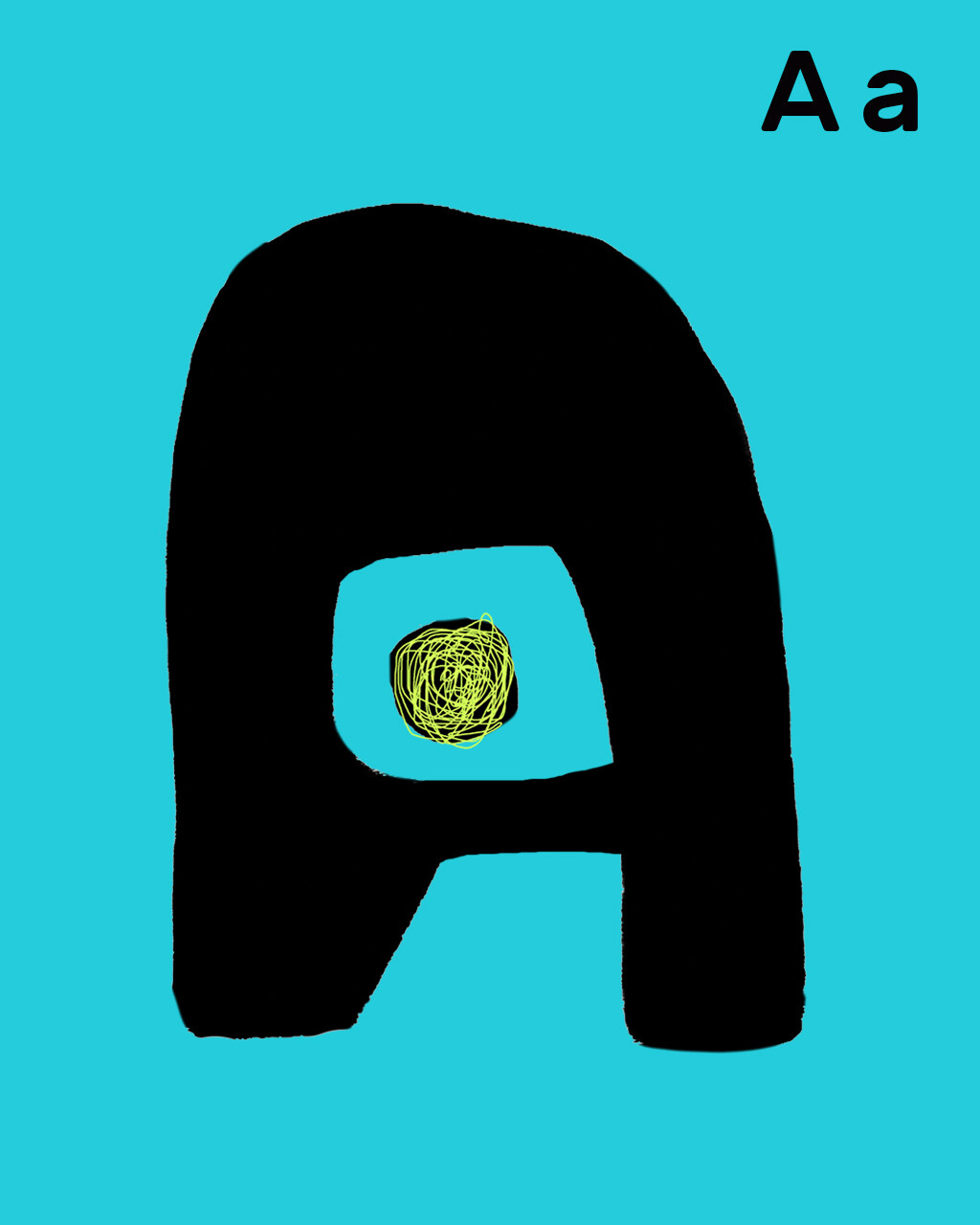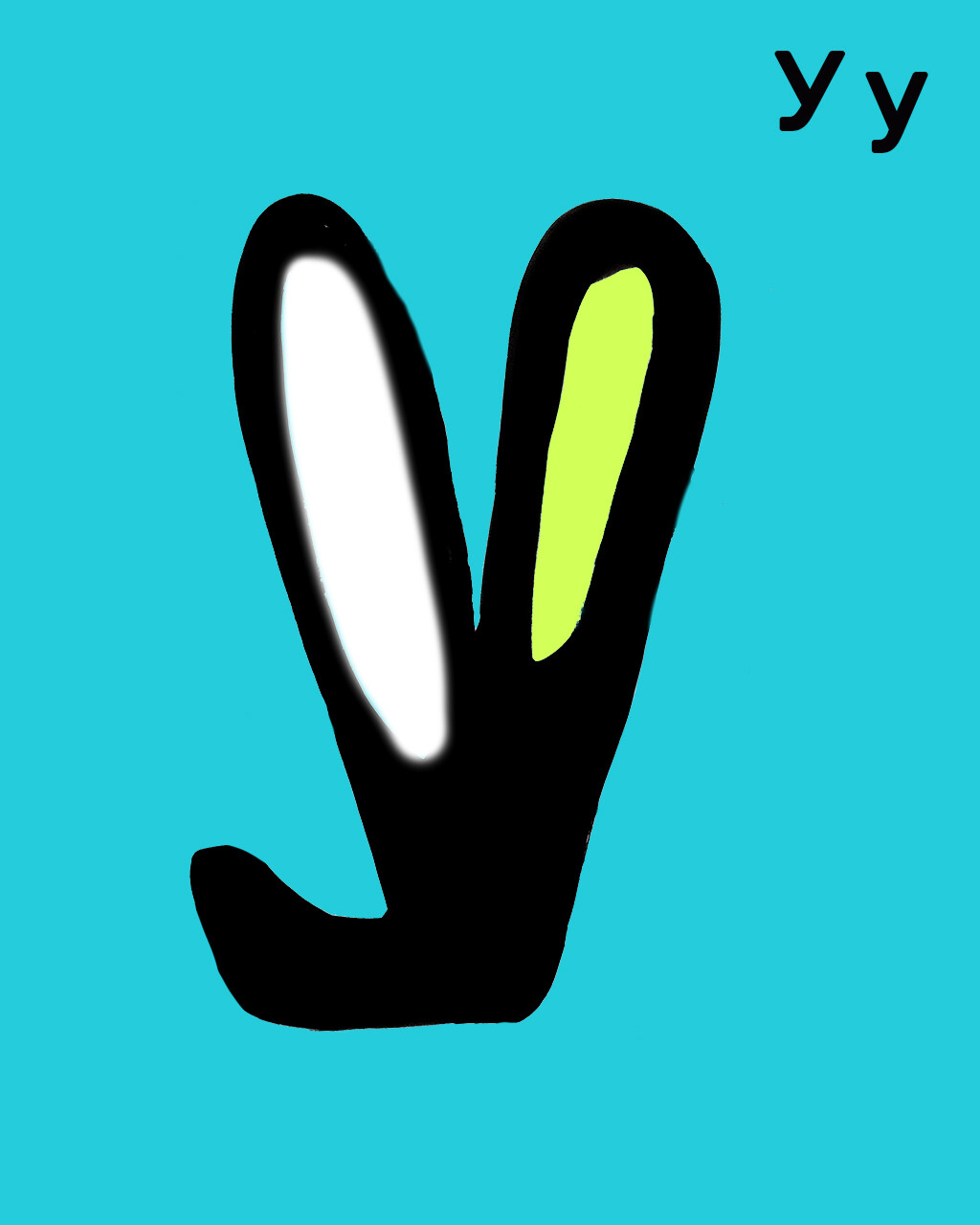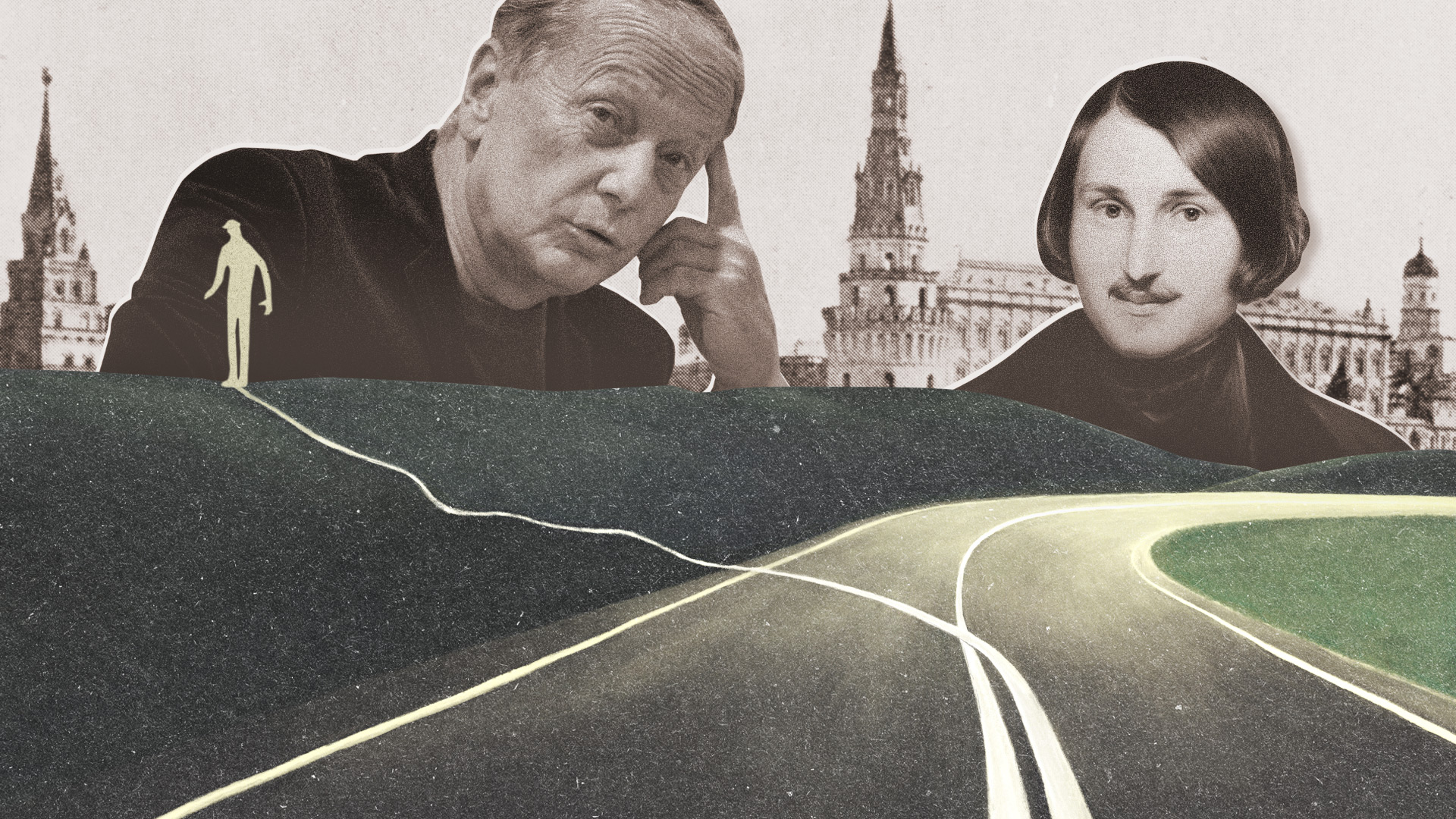
33 interesting facts about the 33 letters of the Russian alphabet


Most often, the Cyrillic alphabet frightens foreigners. Almost all of the letters in it are somewhat familiar, but some of them are read and pronounced differently – for example, ‘B’ in Russian is ‘Б’, while ‘V’ is ‘В’. But, there are also completely strange letters that have no sound at all – like the hard sign (‘Ъ’) and soft sign (‘Ь’). Don’t be afraid, we’ll explain!
We’ll also tell you why the letter ‘Ё’ is constantly discriminated against, which letter looks like a bug and how you need to position your jaw to pronounce ‘Ы’!
Аа

This is the first letter of the Russian alphabet and one of the most frequently used. It derives from the Greek ‘Alpha’ and there are almost no original Russian words that start with it. Perhaps only ‘авось’ (‘avos’ – you can read more about this word here, by the way). What’s also interesting – in Old Slavonic, this letter was known as ‘Аз’ (Az), just like the pronoun ‘I’. “Азъ есмь царь” (“Az yesm tsar” – “I am the Tsar”).
Бб

The Latin alphabet has no such letter, but there is the corresponding sound – it belongs to the letter ‘B’, which derives from the Greek letter ‘Beta’. This letter has quite a self-sufficient function in the Russian language – the subjunctive particle ‘бы’ (‘byi’) is often shortened to just ‘б’. Like when they sing in the Soviet movie ‘Kidnapping, Caucasian Style’ (1967): “Yesli b ya byl sultan…” (as opposed to the correct way: “Yesli by ya byl sultan…” – “If I was a sultan…”).
Вв

In its way of writing, this letter is similar to the Greek letter ‘Beta’; however, it’s read as the English ‘V’. Often, though, this letter is pronounced as ‘F’ – for example in words ‘любовь’ (lyubov’ – ‘love’) or ‘вторник’ (vtornik – ‘Tuesday’). Sometimes it’s not pronounced at all! Like, for example, the first ‘в’ in the word ‘чувство’ (chu[v]stvo – ‘feeling, sense’). Also, ‘в’ is a preposition (with the same meaning as the English preposition ‘in’).
Гг

Depending on how a person pronounces this letter when it stands at the beginning of a word, you can tell where this person is from! In the dialects of the Tula and Ryazan regions, for example, this voiced ‘Г’ (‘Ghe’) will be softened (this is called ‘Ghe’ fricative), while southerners from Krasnodar Territory can pronounce it like ‘Khe’ (which is called ‘Ge’ glottal) – which is a norm for the Ukrainian language, for instance. The Russian language even has the verb ‘гэкать’ (‘ghekat’), which means to pronounce this letter wrong. But, with that being said, it’s completely natural to soften this letter to ‘Kh’ at the end of the word ‘Бог’ (‘Bog’ – ‘God’), for example.
Дд

This letter is derived from the Greek letter ‘Delta’. In the Early Cyrillic alphabet, it was called ‘добро’ (dobro – ‘good’). But, what’s good about it if its way of writing in cursive and in print is so different? And its lowercase looks like the English ‘g’… Another one of its features is that the sound of the ‘Д’ letter becomes voiceless at the end of a word and before voiceless consonants. So, pay attention – and make sure to figure out if you’re being told ‘код’ (‘kod’ – ‘code’) or ‘кот’ (‘kot’ – ‘cat’).
Ее

In this form, this letter appeared after the Russian language reform of Peter the Great and the introduction of the so-called civil script (as opposed to the church script). Earlier, this letter looked like this: ‘Є’, but it was too easy to confuse it with the letter ‘Э’, which is even often called a ‘rotated Э’, as to not confuse the two. They sound the same, by the way. But, at the beginning of a word or after a consonant, a ‘й’ (j’) sound is added to the letter ‘Е’.
Ёё

This letter was officially established only in 1942; before that, the alphabet had only 32 letters. ‘Ё’ had always been considered just a variant of the letter ‘Е’. However, even to this day, the letter ‘ё’ is often discriminated against and people no longer bother to write the dots above it. The proper pronunciation is supposed to be understood from the context (Poor foreigners learning the language!). Read more here.
Жж

This is the most “buzzing” letter of the Russian alphabet. The word ‘жук’ (‘zhuk’ – ‘beetle’) begins with it, there’s three of them in the word ‘жужжание’ ‘(zhuzhzhaniye’ – ‘buzzing’) and many think there’s the shape of a bug in its outlines. The Greek alphabet had no such letter, it came from Old Slavonic and means nothing less than ‘жизнь’ (‘zhizn’ - ‘life’).
Зз

The letter ‘З’ initially looked like its Greek (and Latin) counterpart – ‘Z’. For a long time, it existed with two different ways of writing. But, with time, only the ‘З’-shape remained in use. You should be careful with this letter, since, occasionally, it literally swaps sounds with the letter ‘С’ (‘Es’). For example, in the word ‘сказка’ (‘skazka’ – ‘fairy tale’), instead of the ‘З’ sound, there’s a ‘С’ sound, but, in the word ‘сделать’ (sdelat’ – ‘to do, to finish’), to the contrary, there’s a clear ‘З’ sound (before the voiced consonant). In a large number of prefixes, the letters ‘З’ and ‘С’ are interchangeable – depending on the letter that follows the prefix. ‘Бесполезный’ (‘bespolezniy’ – ‘useless’), but ‘Безрадостный’ (‘bezradostniy’ – ‘joyless’).
Ии

This letter derives from the Greek letter ‘Eta’, which looks like ‘H’. In Old Slavonic this letter was called ‘izhe’, translated as ‘which’. In the Russian language today, you can often hear the phrase “и иже с ними” (“i izhe s nimi”), meaning “people like them”, “their ilk”. Until the 1917 Russian language reform, the Russian alphabet also had the letter ‘I’, like the Greek letter ‘Iota’, but the Bolsheviks merged it with ‘И’. For example, the word ‘мiр’ (‘mir’) meant ‘world’, while the word ‘мир’ (also ‘mir’) – ‘peace’.
Йй

It’s interesting to play a word game with this letter, trying to remember which words begin with it: ‘йод’ (‘yod’ - ‘iodine’), ‘йога’ (‘yoga’), ‘йогурт’ (‘yogurt’)… mainly all of these are, of course, borrowed words. Officially, it appeared as a separate letter only in the 20th century, before it was signified by the letter ‘И’ with a dash on top. The sound itself is something between Russian ‘И’ (pronounced like ‘ee’) and ‘J’ – and it’s called ‘short И’.
Кк

This letter also came from the Greek language and is familiar to those who know the Latin alphabet. But, the way of writing the lowercase letter ‘к’ is different from, for example, the English variant – ‘k’. The Russian letter doesn’t have a line stretching upwards, it’s just a small copy of the uppercase letter that doesn’t exceed the line size. It’s almost impossible to see a combination of the letters ‘к’ with ‘ы’ or ‘э’ in original Russian words – only in borrowed words or in the words of the ethnic peoples of the Russian Federation: ‘акын’ (‘akyn’; an improvised poet and singer in the Kazakh and Kyrgyz cultures), ‘кэш’ (the English word ‘cash’).
Лл

Officially, this letter is called ‘El’, but, in spelling, it doesn’t look like its Latin counterpart, but rather like the Greek letter ‘Lambda’ (‘Λ’). And, this is exactly how it’s written in cursive. In a typewritten text, it’s similar to the Russian letter ‘П’, but with a squiggle. Such a way of writing was brought into fashion by St. Petersburg printing houses in the 19th century and it remains the norm to this day.
Мм

You can see this letter in the capital and other cities of Russia, usually illuminated in bright red – that’s the sign of a metro entrance. The letter is read like the Latin ‘Mm’, but since it came from Greek, the lowercase version of it is written differently. It’s softened before many vowels, because of which it became the cutest letter of the language – a cat goes ‘мяу’ (‘myau’ – ‘meow’) and when we melt with cuteness, we utter: ‘мимими’ (‘mimimi’).
Нн

This is the letter responsible for refusal and rejection. ‘Нет’ (nyet - ‘no’), ‘не’ (ne - ‘not’), ‘никак’ (‘nikak’ – ‘no way’). This is the most frequently used consonant. It is derived from the letter ‘Nu’ of the Greek alphabet and confuses all foreigners by the fact that it’s written not as ‘N’, but as ‘Н’. That, however, was not always the case. In the old church texts the horizontal line of the letter was written at an angle, but in the middle between the vertical lines. Under Peter the Great, this line became completely horizontal.
Оо

This is the most frequently used letter of the Russian language. In unstressed syllables, the pronunciation is somewhere in between ‘О’ and ‘А’ (in phonetics, this sound is marked as ‘ɐ’). In the regions of Russia, people often make fun of Muscovites for how they always stretch the name of their city – ‘Maaaaskva’. Russians also pronounce the name of former U.S. President Obama as ‘Abama’, confusing the Americans who don’t understand what they are talking about. In contrast, in the villages of the Russian North, you can meet people who pronounce all ‘O’ as ‘O’, which is unnatural to the modern Russian ear.
Пп

You’ve surely heard of the number ‘π’ (‘pi’) and it’s this Greek number that spawned ‘П’ in Russian (they, however, pronounce it ‘pe’, not ‘pi’). However, be careful as, in cursive lowercase, ‘п’ is often written similar to the English ‘n’.
Рр

This letter often confuses foreigners. Because it looks like Latin ‘P’, but reads like ‘R’. Yet, it’s easy to remember – since the words ‘Россия’ (Rossiya – ‘Russia’), ‘русский’ (‘russkii’ – ‘Russian’) and ‘рубль’ (‘rubl’ – ‘ruble’; ₽) begin with it! In its ancient way of writing, this letter was called ‘rĭci’ or ‘rci’ and meant ‘to speak’.
Сс

At some point, the Russian language also had the letter ‘S’; by the way, it still exists today in some Cyrillic alphabets (like Macedonian, for example). Both of these letters hail from the Greek letter ‘Sigma’. At the beginning of the 19th century, Peter the Great introduced the civil script and the letter ‘S’, often similar in sound to ‘Z’, merged with ‘З’. But, the letter ‘С’ remained unchanged. It’s believed that it took the form of the lowercase Greek letter ‘Sigma’ – ‘ς’, with its squiggle on the bottom removed for simplicity. ‘C’ is an important letter, because the word ‘слово’ (‘slovo’ – ‘word’) begins with it. “In the beginning was the Word,” the first line of the Gospel states.
Тт

‘Т’ is derived from the Greek letter ‘Tau’ (‘Τ’), so its shape differs from the Latin ‘t’. Pay attention – in cursive, the lowercase ‘т’ looks more like the English ‘m’! This is one of the few letters of the Russian language that sometimes is not pronounced at all. For example, in complex combinations like ‘стн’, ‘стск’ and others - ‘лестница’ (‘lestnitsa’ – ‘ladder, staircase’) or ‘счастливый’ (‘shchastlivy’ - ‘happy’).
Уу

In writing, this letter is very similar to the Latin letter ‘Y’ or the Greek letter ‘Upsilon’. But, in reality, the history of this letter is more complex; as a letter, it emerged under Peter the Great and in his new civil script. Today, the Russian ‘У’ in phonetics represents the sound ‘U’ [‘u’], but, earlier, it was noted as a combination of two letters – ‘оу’ – ‘О’ and Izhitsa (‘Ѵ’), which, in turn, derived from ‘Upsilon’ and, in itself, signified the [‘i’] sound. The complex ‘оу’ in writing always looked differently: either ‘Ꙋ’ or ‘ꙋ’. So, it was simplified to ‘У’.
Фф

If you want to show discontent, just pronounce this letter. In Russian, it’s called ‘фыркать’ (‘fyrkat’ – ‘to snort’), to express your disgust by uttering ‘фу’ (‘fu’) and ‘фи’ (‘fi’). This letter comes from the Greek letter ‘Phi’ and is often encountered in specifically borrowed words.
Хх

In Russian, this letter is responsible for laughter (‘хихихи’ – ‘hihihi’ and ‘ахаха’ – ‘ahaha’), as well as for a great multitude of profanity we can’t mention here, as well as for an even greater multitude of their derivatives. It is this ‘Х’ that the English combination of ‘Ch’ turns into, so ‘херувим’ (‘kheruvim’ – ‘cherub’) and ‘христиане’ (‘khristiane’ – ‘Christians’) also begin with it.
Цц

This letter corresponds to the sound ‘ts’, so it also appears in foreign words, where there’s a Latin ‘C’ or ‘Z’: for example, ‘Caesar’ (in Russian – ‘Цезарь’) or ‘pizza’. Also, ‘ц’ is an interjection and a very prominent one. One can ‘цыкнуть’ (‘tsyknut’ – ‘to hush’), so that others would stop talking in a theater. Or one can utter a long ‘ts’ when one’s boss says they have to re-do their report. Or one can also ‘цокнуть’ (‘tsoknut’ – ‘to clatter’) with their heel.
Чч

In Old Slavonic, this letter was called ‘червь’ (‘worm’). It came from the Cyrillic sign ‘Ҁ’ (‘koppa’), which came from the ancient Greek numerical system and meant the number 90. As a result, the Russian ‘Ч’ also had a bowl-shaped form, but horizontal. In combinations with other letters, ‘Ч’ now and then tries to “disappear” and transforms into ‘Ш’ (‘sh’) – for instance, ‘что’ (‘what’) is pronounced as ‘shto’ (not ‘chto’), while ‘конечно’ (‘of course’) as ‘koneshno’.
Шш

This is the most rustling letter out of the shushing sounds of the Russian language. And the most complex one to recognize in cursive (This is, for example, how the word ‘shinshilla’ - ‘chinchilla’ is spelled).

Most likely, it came into the Russian language from the letter ‘Shin’ of the Semitic alphabet. By the way, officially the letter is pronounced ‘Sha’ and the same interjection is used (more often in the South) to quickly ask someone to be quiet…
Щщ

The strangest and the most monstrous letter, which in English transcription could only be transformed into ‘shch’ – poor Khrushchev! In many Slavic languages, however, you can encounter sounds ‘Ш+Т’ (‘sh+t’) or ‘Ш+Ч’ (‘sh+ch’), which this letter represents. You can also say ‘ща’ (‘shcha’ – ‘right away, just a second’) if you’re asked over quickly. Or you can say: ‘Aга, щаз прям!’ (‘Aga, shchaz pryam!’ - ‘yeah, you wish!’) if you don’t want to do what you’re asked.
Ъъ

This letter doesn’t even have a pronunciation; it’s called the hard sign and has a purely technical function as a separator if a prefix ends with a consonant and the root of the word begins with a vowel. For example, ‘объявление’ (‘obyavleniye’ – ‘announcement’). Some languages, as well as phonetic ones, use an apostrophe for that. However, until the 1917 Bolshevik Revolution, this letter was much more widespread. It was called ‘Yer’ and often stood at the end of words after a consonant, showing that they belong to the masculine gender. You can often see it on store sign boards – for instance, ‘СмирновЪ’ (‘Smirnov’) and so on. Read more here.
Ыы

This letter is the hardest to pronounce for foreigners. In Russian, there are no words that would start with Ы (only some toponyms in the republics where another language is widespread. For example, Yakutia has the ‘Ыгыатта’ – ‘Ygyatta’ – River). Today, ‘Ы’ is also the funniest letter of the Russian alphabet. First of all, ‘Операция Ы’ (Operation Y) is an iconic Soviet comedy movie. Second, in the Internet slang, ‘Ы’, as well as ‘Ыыыыы’ means something like a laughter, the Russian version of LOL. It’s used for a not-very-intellectual joke or a stupid meme. Try to push your bottom jaw forward and pronounce a long Ыыыы — and you’ll understand. Read more here.
Ьь

The soft sign, just like the hard sign, doesn’t have a pronunciation, but has a lot of technical functionality. It’s utilized for separating vowels and consonants: ‘семя’ (‘semya’ – ‘seed’) and ‘семья’ (simya – ‘family’) are not just read differently, but also mean different things. Also, the soft sign softens consonants at the end of a word – compare ‘мат’ (‘mat’; ‘profanity’) and ‘мать’ (‘mat’; ‘mother’). Also, ‘Ь’ at the end of a verb signifies its infinitive form. Not just foreigners, but also Russians themselves tend to make the most amount of mistakes, for example, in verbs that end with ‘ться/тся’. Read more here.
Ээ

We have already talked about ‘rotated Э’ when we spoke about the letter ‘Е’. Previously, there were two letters mirroring each other, but, under Peter the Great, only one remained – ‘Э’. Most often, the letter ‘Э’ is used in borrowed words (‘поэт’ - ‘poet’, ‘сэр’ – ‘sir’), but also in pronouns like ‘этот’ (‘etot’ – ‘this’) or in onomatopoeic words like ‘эх’ (‘ekh’ – ‘oh’) or ‘эгегей’ (‘egegey’ – ‘he-hey’).
Юю

This letter appeared at the beginning of the 18th century from merging three sounds at once – ‘I+ОУ’. It’s used quite rarely, most often in borrowed words and names – ‘Юпитер’ (‘Yupiter’ – ‘Jupiter’), for example. You can see it in first-person present form verbs ‘Я люблЮ тебя’ (‘Ya lyublyu tebya’ – ‘I love you’) or in some forms of nouns (for example, the dative case – ‘князю’, ‘knyazyu’ – ‘[to give to] the prince’). However, there are a lot of exceptions when using this letter and it can’t stand next to every letter.
Яя

This is the last letter of the alphabet and, at the same time, the first person pronoun. This letter is a mirror image of the Latin ‘R’, so it often confuses both foreigners and Russian children, who are only learning to write (it’s often easier for them to write ‘R’). Previously, the letter looked like ‘IA’ (still pronounced as ‘Ya’), but, under Peter the Great, it merged into a single letter. If it doesn’t stand at the beginning of a word or before a vowel, it’s pronounced as ‘A’, softening the consonant before it.













